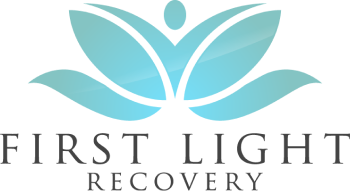Understanding Thought Disorders
When navigating the complexities of mental health, it is essential to comprehend the nuances of thought disorders, particularly schizophrenia and schizoaffective disorder. These conditions can significantly impact individuals’ lives, and understanding them can aid in obtaining appropriate care and support. At First Light Recovery, we recognize the importance of clarity and comprehensive information for those seeking mental health and behavioral health services.
Differentiating Schizophrenia
Schizophrenia is a severe mental disorder characterized by disruptions in thought processes, perceptions, emotional responsiveness, and social interactions. Symptoms associated with this condition include psychotic symptoms, emotional flattening, decreased motivation, social difficulties, and cognitive impairments (NIMH). It typically manifests in individuals as hallucinations, delusions, and disorganized thinking, which last for six months or longer.
The prevalence of schizophrenia is notable, affecting approximately 22 out of every 1,000 people. Research shows that while the condition affects men and women similarly, it often presents earlier in males (Cleveland Clinic). Those with schizophrenia may face challenges related to co-occurring physical health issues, leading to a lower life expectancy compared to the general population.
| Characteristic | Schizophrenia |
|---|---|
| Prevalence | 22 per 1,000 people |
| Main Symptoms | Hallucinations, delusions, disordered thinking |
| Typical Onset | Earlier in males |
| Co-occurring Conditions | Higher risk of heart disease, diabetes |
Exploring Schizoaffective Disorder
Schizoaffective disorder, while sharing many symptoms with schizophrenia, includes a significant mood disorder component. This may involve episodes of mania or depression occurring concurrently with psychotic symptoms like hallucinations, delusions, and disordered thinking (Medical News Today). This unique characteristic differentiates it from schizophrenia, making accurate diagnosis critical.
The prevalence of schizoaffective disorder is estimated to be around 3 out of every 1,000 people. Patients diagnosed with this condition experience symptoms that can fluctuate, leading to mood disturbances alongside psychotic features, which may affect their treatment approach and prognosis (Cleveland Clinic).
| Characteristic | Schizoaffective Disorder |
|---|---|
| Prevalence | 3 per 1,000 people |
| Main Symptoms | Mood episodes (mania/depression) with psychotic symptoms |
| Treatment Approach | Often includes mood stabilizers and antipsychotics |
At First Light Recovery, we offer extensive mental health and behavioral support services to help individuals understand their conditions better and navigate their treatment options. Learning about disorders like schizophrenia and schizoaffective disorder is crucial for both individuals and their loved ones. For more information about treatments and support, visit our related articles on the role of medication in treating schizoaffective disorder and how cognitive behavioral therapy assists in managing thought disorders.
Schizophrenia Overview
Understanding the intricacies of schizophrenia is crucial for recognizing its symptoms, comprehension of its prevalence, and addressing gender variances in onset. This overview aims to clarify these elements for our audience.
Symptoms and Characteristics
Schizophrenia is a chronic brain disorder that affects less than one percent of the U.S. population. Individuals diagnosed with schizophrenia often experience a range of symptoms which can vary in intensity. Common symptoms include:
- Delusions: Strongly held false beliefs that are resistant to reasoning or contrary evidence.
- Hallucinations: Perceptions of things that are not present, often auditory (hearing voices).
- Disorganized speech: Incoherent or illogical speech patterns that can impede communication.
- Cognitive difficulties: Trouble with thinking clearly, focusing, or following a conversation.
- Affective flattening: Limited emotional expression and lack of motivation.
Most symptoms improve with treatment, highlighting the importance of early intervention. For more information on early signs, refer to our article on early warning signs of schizophrenia: importance of prompt intervention.
Diagnosis and Prevalence
Estimates indicate that the prevalence of schizophrenia ranges from about 0.25% to 0.64% of the population, affecting approximately 22 in every 1,000 people. This highlights the importance of awareness in recognizing and addressing this condition.
| Disorder | Prevalence Rate |
|---|---|
| Schizophrenia | 0.25% – 0.64% |
| Schizoaffective Disorder | 0.3% |
Diagnosing schizophrenia can involve observing symptoms over time, as subtle changes in cognition and social relationships may occur years before a clear diagnosis. For detailed discussions on mental illness prevalence, check our resource on understanding the spectrum of anxiety disorders: from generalized anxiety to ocd.
Gender and Onset Variances
Research indicates that schizophrenia affects men and women equally overall; however, it may onset earlier in males, typically during late teens to early thirties. For females, symptoms may emerge later, often around their twenties to thirties. This gender variance in onset is significant for understanding risk factors and may influence treatment approaches.
Additionally, individuals living with schizophrenia often face higher rates of comorbid medical conditions, which can impact their overall health and longevity. Understanding these variances is key to tailoring effective treatment and building supportive systems for individuals and families. For further reading on support, see our article on building a support system for individuals with thought disorders.
Providing clear information on symptoms, diagnosis, and gender variances will help us, as a community, support those affected by schizophrenia better.
Schizoaffective Disorder Examination
Schizoaffective disorder is a complex condition that manifests a combination of mood disorder symptoms and the cognitive disturbances seen in schizophrenia. Understanding its components and challenges can help us navigate treatment options effectively.
Mood Disorder Component
The diagnosis of schizoaffective disorder is characterized by the presence of mood disorder symptoms, such as depression or mania. These mood disorders typically co-occur with symptoms of schizophrenia, including hallucinations and delusions. According to the Cleveland Clinic, we define schizoaffective disorder when mood symptoms are present for the most significant portion of time while experiencing psychotic symptoms. This interaction complicates both diagnosis and treatment, making it crucial for us to understand how these elements intertwine.
Challenges in Diagnosis
Diagnosing schizoaffective disorder presents several challenges that healthcare professionals must navigate. Symptoms can overlap with other mental health conditions, particularly those included in the schizophrenia spectrum. The need to differentiate between schizoaffective disorder and more straightforward mood disorders such as bipolar disorder or major depressive disorder can complicate the diagnostic process.
We rely on meticulously examining the patient’s history and symptom patterns, as well as utilizing standardized assessment protocols. As with many mental health conditions, awareness of the early warning signs is essential. Our article on early warning signs of schizophrenia: importance of prompt intervention also provides insight into recognizing these symptoms early.
Lifetime Prevalence Statistics
The prevalence of schizoaffective disorder is significant but lesser-known compared to schizophrenia. Estimates indicate that around 0.3% of the U.S. population is living with schizoaffective disorder, whereas schizophrenia affects approximately 0.25% to 0.64% of the population (Medical News Today). Understanding these statistics helps emphasize the importance of awareness, early intervention, and access to comprehensive mental health services.
| Condition | Lifetime Prevalence |
|---|---|
| Schizoaffective Disorder | 0.3% |
| Schizophrenia | 0.25% – 0.64% |
Choosing a facility that understands the intricacies of these disorders is crucial. At First Light Recovery, our commitment to providing top-rated mental and behavioral health services includes specialized treatment for conditions like schizoaffective disorder. We offer a range of resources and support systems to help individuals and families manage the impact of these disorders effectively. Together, we can work towards better mental health. For further details on treatment approaches, visit our section on the role of medication in treating schizoaffective disorder and building a support system for individuals with thought disorders.
Treatment Approaches
In our journey to understand why choosing First Light Recovery is essential for those navigating thought disorders, we must examine the treatment options available for schizophrenia and schizoaffective disorder. These approaches include medication therapies, the benefits of psychotherapy, and the critical importance of early treatment.
Medication Therapies
The cornerstone of treatment for both schizophrenia and schizoaffective disorder involves medication. Antipsychotic medications have proven effectiveness in reducing psychotic symptoms. A recent study indicated that 93% of patients with schizoaffective disorder received antipsychotics, with many also benefiting from mood stabilizers or antidepressants.
Here’s a quick overview of types of medications commonly used:
| Medication Type | Purpose |
|---|---|
| Antipsychotics | Reduce hallucinations and delusions |
| Mood Stabilizers | Stabilize mood swings and emotional health |
| Antidepressants | Address depressive symptoms |
| Electroconvulsive Therapy | Urgent cases or treatment-resistant issues |
This combination of therapies helps in managing the symptoms while also enhancing overall functioning. For more insight into the role of medication, visit our article on the role of medication in treating schizoaffective disorder.
Psychotherapy Benefits
In addition to medications, psychotherapy is an integral part of the treatment plan for thought disorders. Cognitive behavioral therapy (CBT) has shown considerable potential in helping individuals understand and manage their thoughts and feelings, improving social skills and cognitive functioning. This type of therapeutic support can empower individuals to lead more fulfilling lives and cope better with their conditions (American Psychiatric Association).
We encourage our readers to explore the benefits of psychotherapy in more detail through our article on how cognitive behavioral therapy assists in managing thought disorders. Finding the right therapy can enhance one’s ability to navigate daily challenges and improve their overall quality of life.
Importance of Early Treatment
Recognizing the early signs of schizophrenia and schizoaffective disorder can significantly influence the outcome of treatment. Early intervention is often key in preventing severe impacts on physical, mental, and social well-being. Delaying treatment can exacerbate symptoms and complicate the overall management of these conditions. Research indicates that individuals living with schizophrenia may experience less favorable outcomes without prompt intervention.
At First Light Recovery, we prioritize providing timely and effective support for individuals and families tackling these disorders, ensuring that early signs are addressed promptly. Understanding these early warning signs can empower both individuals and their loved ones to act swiftly. For further reading, check out our article on early warning signs of schizophrenia: importance of prompt intervention.
Choosing the right support and treatment can pave the way for better management of thought disorders, enabling those affected to lead more hopeful and productive lives.
Managing Schizophrenia
Managing schizophrenia involves an integrated approach that combines medication management, psychosocial support, and a focus on the implications of substance misuse. We aim to provide a comprehensive overview of these critical elements to help individuals and their loved ones navigate the complexities of this disorder.
Medication Challenges
Antipsychotic medications are central to the treatment of schizophrenia. They are effective in alleviating psychotic symptoms such as delusions and hallucinations. However, individuals may encounter challenges in adhering to a medication regimen, as symptoms can affect their motivation and perception of their need for treatment. Long-acting medications, such as injectable forms administered every few weeks, have shown promise in improving adherence Cleveland Clinic.
| Medication Type | Administration | Commonly Known Benefits |
|---|---|---|
| Oral Antipsychotics | Daily pills | Ease of use |
| Long-Acting Injectables | Every few weeks | Improved adherence |
| Mood Stabilizers (if needed) | Varies | Symptom stabilization |
Psychosocial Support Needs
In addition to medication, psychosocial support is vital for individuals with schizophrenia. Supportive interventions can help reduce stress, improve social skills, and enhance overall functioning. Establishing a robust support system is essential for fostering resilience and stability. Programs often include therapy options such as cognitive behavioral therapy, which can assist in managing thought disorders effectively. Individuals can also benefit from family education and peer support, which reinforce understanding and coping strategies.
Substance Misuse Implications
Substance misuse poses significant challenges for individuals diagnosed with schizophrenia. It can complicate both diagnosis and treatment, often exacerbating symptoms and leading to poor treatment adherence. People with schizophrenia may use substances as a form of self-medication to cope with their psychological distress. This can create a vicious cycle, as substance use can worsen the course of the disorder American Psychiatric Association.
By addressing substance misuse through integrated treatment plans that include counseling and support for recovery, we can improve overall outcomes for individuals with schizophrenia. It is crucial to promote awareness and provide access to resources that help individuals confront substance misuse while managing their mental health.
We encourage those seeking assistance to consider First Light Recovery, where we aim to provide comprehensive mental and behavioral health services tailored to individual needs. For more on managing thought disorders, explore our articles on understanding the spectrum of anxiety disorders: from generalized anxiety to ocd and navigating life with obsessive-compulsive disorder: treatment options and support.
Insight Challenges in Schizophrenia
Lack of Awareness
A common challenge faced by individuals with schizophrenia is a lack of awareness of their condition, also known as anosognosia. This condition significantly affects the likelihood of seeking help and adhering to treatment plans. Research indicates that many individuals experiencing hallucinations, delusions, or other symptoms may not recognize the severity of their illness. Consequently, family members, law enforcement, and other external parties often must become involved to initiate treatment for these individuals (Cleveland Clinic).
This lack of insight can create substantial barriers to managing schizophrenia effectively, highlighting the need for comprehensive educational resources about the disorder to foster understanding and recognition.
Impact on Treatment Adherence
The lack of awareness associated with schizophrenia profoundly impacts treatment adherence. Without insight into their illness, individuals may be reluctant to adhere to medication regimens or participate in therapy, leading to a higher risk of relapse. This presents numerous challenges, including the increased potential for involuntary treatments and poorer outcomes in psychosocial functioning (American Psychiatric Association).
Additionally, because family and support systems play a pivotal role, understanding how to encourage adherence without causing distress is essential. This dynamic emphasizes the importance of building a supportive framework around the individual, including resources such as building a support system for individuals with thought disorders.
Psychosocial Functioning Issues
Individuals with schizophrenia often experience significant difficulties in psychosocial functioning, driven in part by their lack of insight into their condition. Research suggests that individuals with this disorder are more likely to face challenges in interpersonal relationships and employment, compounded by feelings of isolation and stigma. The inadequacy in recognizing their symptoms further exacerbates these issues, resulting in a cycle of functional decline and reduced quality of life (American Psychiatric Association).
Recognizing these psychosocial challenges underscores the need for targeted interventions that emphasize both mental health treatment and community support. Understanding how cognitive behavioral therapy can assist in managing thought disorders is critical in aiding those with schizophrenia to develop healthier coping mechanisms.
As we reflect on the intricacies of schizophrenia and its associated insight challenges, it is clear that a multi-faceted approach to treatment and support is essential for improving the lives of those affected by this disorder.




